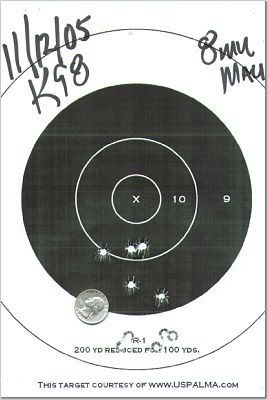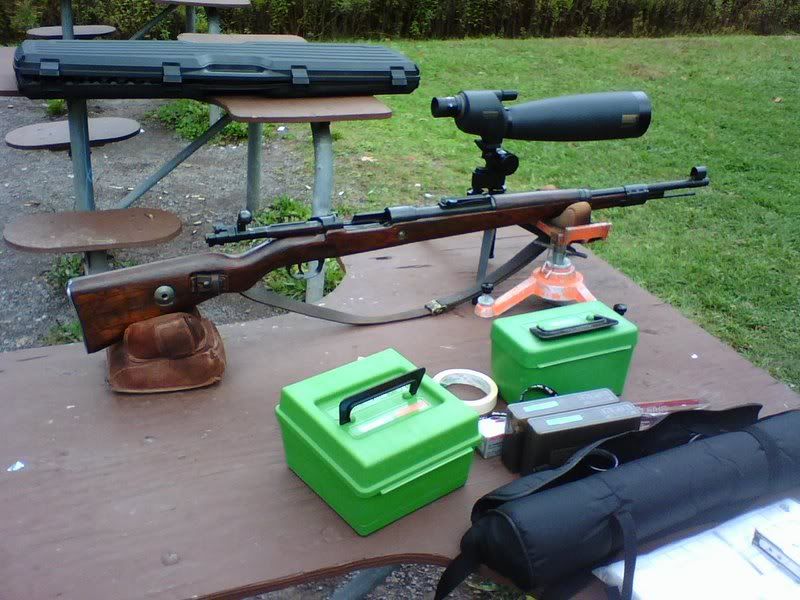One thing about Mauser rifles, even though they were mass produced, there was quite a bit of hand fitting going on still. (which is why there are serial numbers on every part, keep them together).
There is a good article here:
http://www.mausershooters.org/k98k/SC_tips2.html
"Bedding a Mauser action
I found this in "Mauser Bolt action Rifles" by Ludwig Olson, third edition: "PROPER BEDDING OF GERMAN CARBINE 98k (from official German Ordinance document)."
Doing that on a couple RC K98k got them in the 4" range with surplus ammo, considerably smaller with handloading.
Example, same rifle, same day, using a scout scope and handloads worked up in a different rifle:
This is a different rifle, a RC 1940 "42" code when I was doing load development:
On the other hand, if you get one that hasn't been monkeyed with since it was in the hands of a military armorer, in this case a IDF .308 conversion, sometimes you hit the jackpot:
The flyer was called, dude next to me had a muzzle brake, and made me flinch right as it broke (Dammit). Only 50 yards, but factory ammo and iron sights, but can't complain about that.
Took one sighter shot to get the windage, then went 4 for 4 on the 400 yard steel. I have also posted this video a couple times,
http://youtu.be/xWOePGiaBcM
Love that old rifle.






